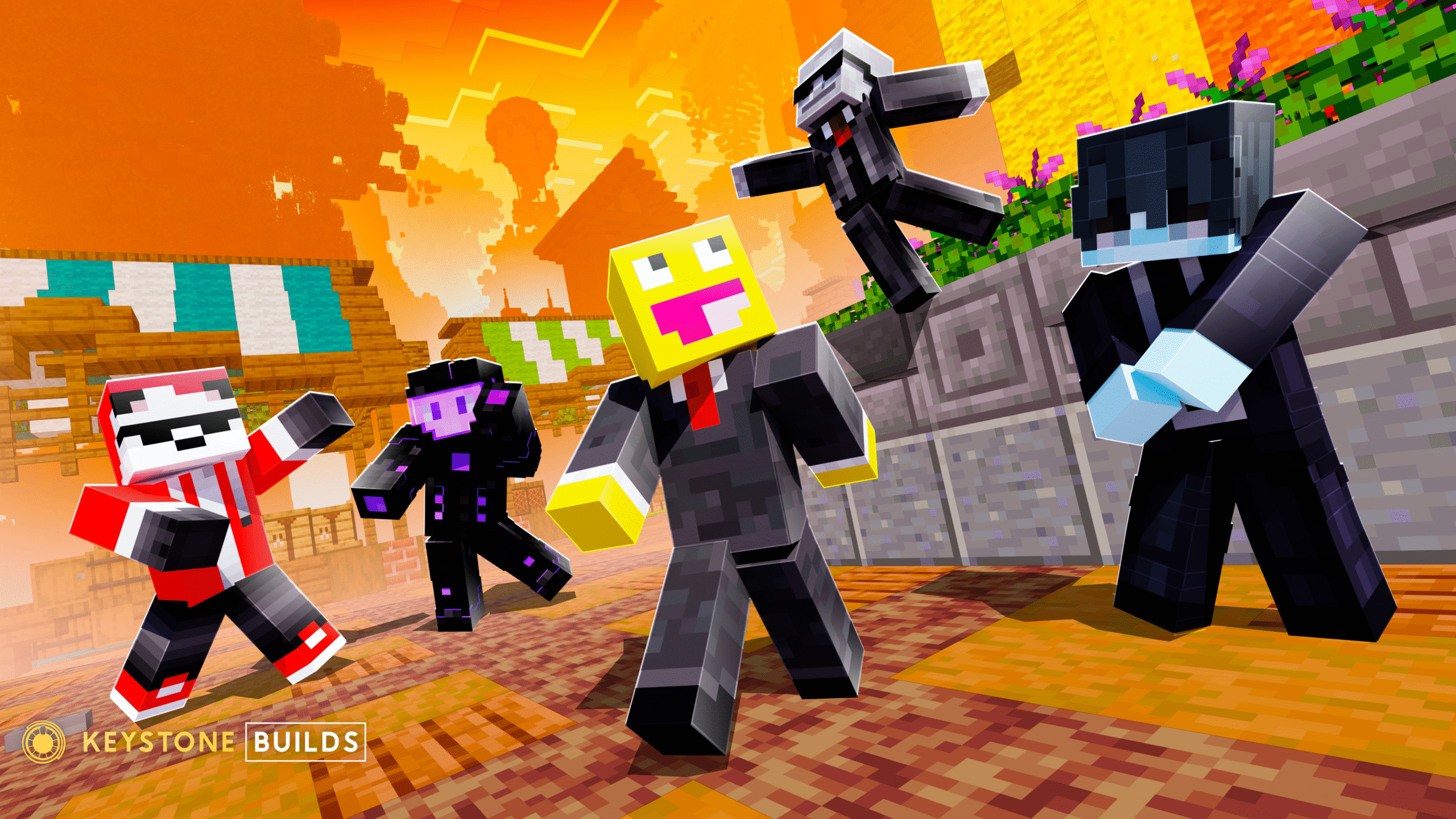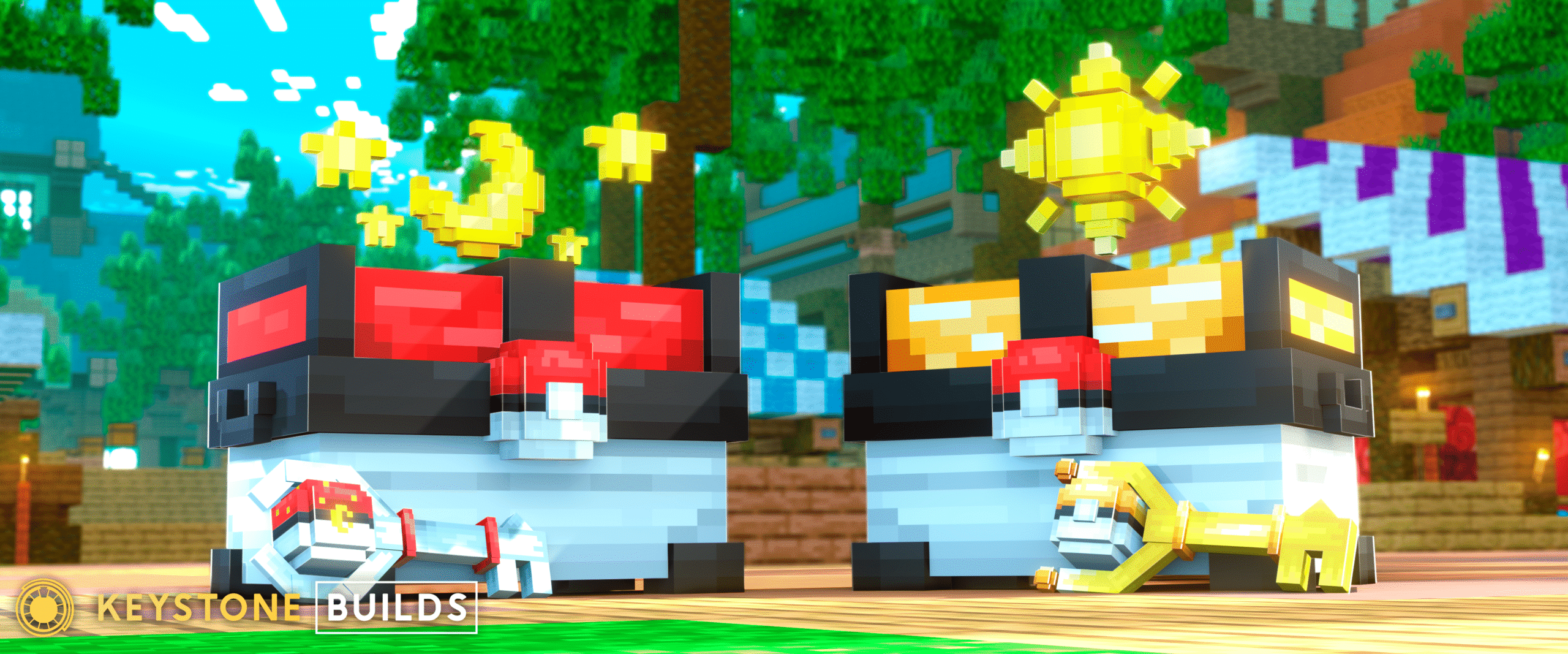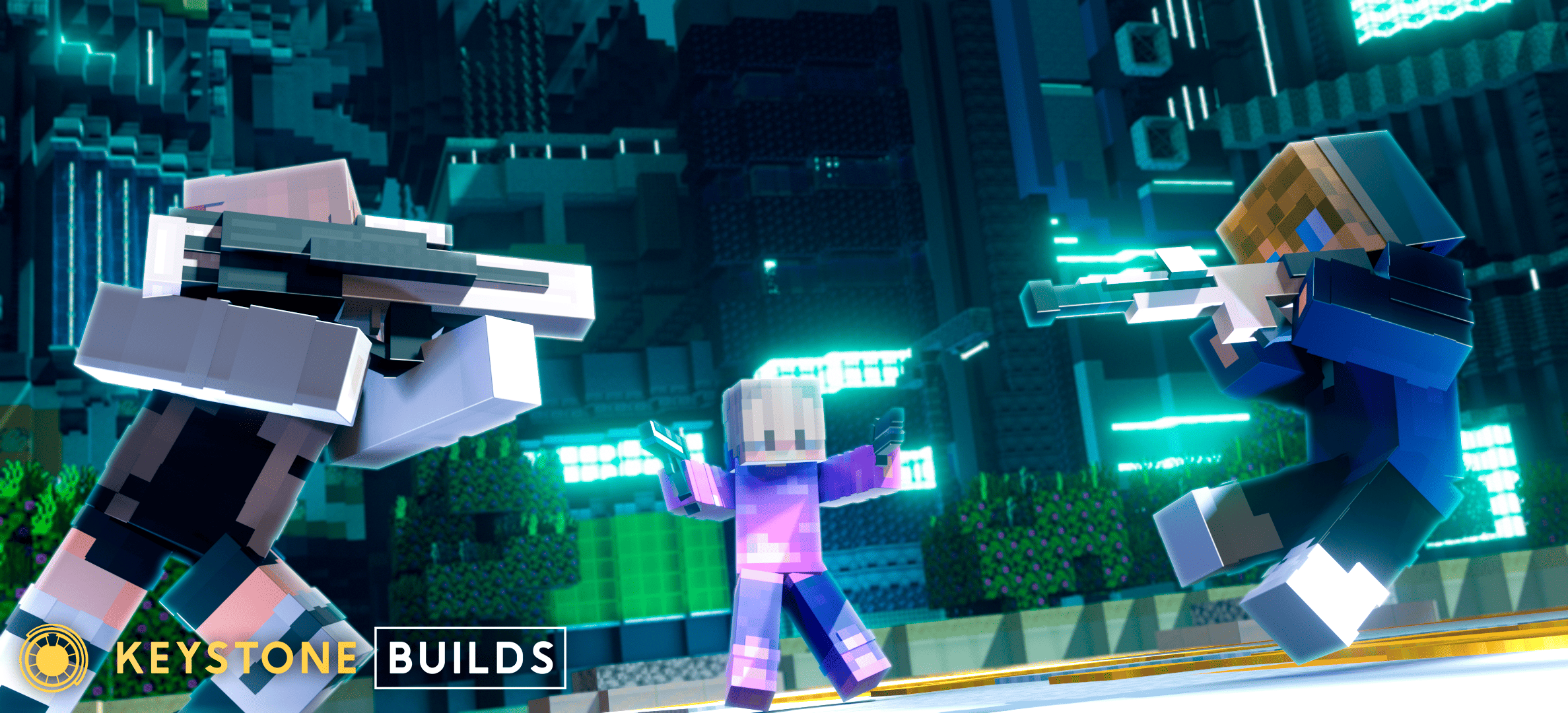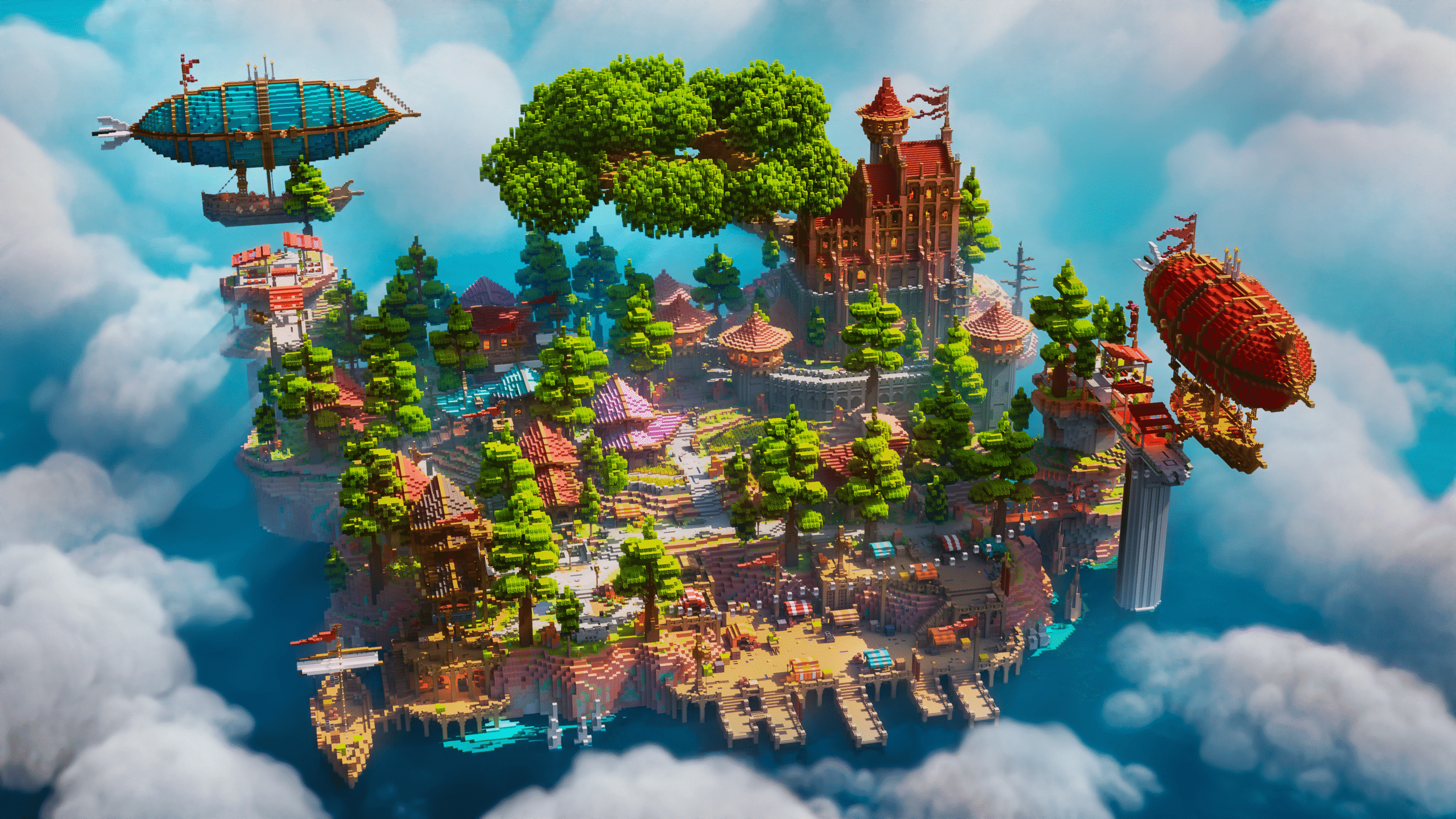Minecraft is a game of limitless possibilities, but at its core, it’s a visual experience. The worlds we create, the landscapes we build, and the spawns we design all contribute to how players feel, think, and act in-game. While mechanics, plugins, and community are essential for a good server, it’s the visuals—what players see the moment they log in—that shape first impressions, drive immersion, and determine whether players stay or leave. The truth is, visuals do more than make your server look pretty: they tap into deep psychological principles that affect how players perceive, engage, and remember your Minecraft world.
In this guide, you’ll learn why visuals matter so much in Minecraft map design, how different elements influence players psychologically, and what you can do to craft maps that are not only beautiful but unforgettable. By understanding the psychology of Minecraft map design, you’ll be able to build worlds that resonate with players, keep them engaged, and make your server stand out in a crowded community.

First Impressions: Visuals Shape Player Decisions
Humans are visual creatures. Studies show it takes less than one second for people to form an initial impression of a new environment. The same applies in Minecraft: when players join a server, the first thing they see—spawn design, lighting, pathways, and landscape—sets the tone.
A professional, cohesive, and inviting visual design signals that your server is trustworthy, active, and worth exploring. A cluttered, inconsistent, or bland map makes players question your commitment and can drive them away before they read the rules or talk to anyone. Even if your server has amazing gameplay, bad visuals can sabotage everything.
The psychological concept of primacy effect—our tendency to remember the first thing we see—means that your spawn and initial areas need extra attention. Invest time in polishing these spaces, because they’ll determine whether players give your server a chance.
Immersion: Visuals Make Players Believe in Your World
Immersion is the feeling of being inside a world so engaging you forget about real life for a while. It’s what turns Minecraft from a sandbox game into an unforgettable adventure. Immersion happens when your visuals, sounds, and gameplay all support a cohesive atmosphere.
When visuals match your server’s theme—medieval towns with cobblestone paths and timber houses, or futuristic hubs with sleek glass towers—players suspend disbelief and feel like they’re truly in another world. But a map with inconsistent visuals breaks immersion instantly. Imagine a sci-fi spawn with random medieval houses nearby; it confuses players and reminds them they’re in a game, not a living world.
Psychologically, immersion increases flow state, where players become fully absorbed in what they’re doing, leading to longer play sessions and deeper emotional connections with your world.
Navigation: Guiding Players with Visual Cues
Visuals don’t just set mood—they help players find their way. Clear pathways, distinct landmarks, and intuitive layouts are critical in Minecraft map design. Players get frustrated when they’re lost, but effective visual design provides subconscious navigation.
- Pathways with consistent materials like gravel, cobblestone, or concrete guide players without words.
- Landmarks like statues, fountains, or towers orient players and give reference points.
- Color coding can signal different areas: green banners for shops, red for PvP arenas, or blue for portals.
- Lighting directs players at night; bright lights attract attention while darker paths discourage exploration.
These techniques use principles from environmental psychology, which studies how physical spaces influence human behavior. A well-designed map with good navigation reduces anxiety and helps players feel confident as they explore.
Emotion: Colors and Shapes Influence Feelings
Colors and shapes in your builds have a direct psychological effect on players. Color psychology shows how different hues evoke different emotions:
- Warm colors like reds and oranges create excitement, energy, and intensity—ideal for PvP or minigame hubs.
- Cool colors like blues and greens create calm, relaxation, and trust—perfect for survival spawns or roleplay towns.
- Dark tones add mystery and suspense, great for adventure maps or dungeons.
- Bright tones create cheerfulness and optimism, ideal for casual servers aimed at younger players.
Shapes matter, too. Rounded structures feel more organic, soft, and friendly. Sharp angles and jagged edges feel aggressive or modern. Tall, narrow builds inspire awe and grandeur, while squat, wide builds feel grounded and safe.
Using colors and shapes intentionally lets you set the right mood for each area, guiding players’ emotions as they move through your world.
Consistency: Creating a Sense of Belonging
Consistency in visual design ties your map together, giving players a sense of place and identity. When blocks, colors, and architectural styles match across your map, it feels like a unified world, not a random collection of builds.
Psychologically, consistent visuals trigger schema theory, which helps the brain categorize and understand new information. When your builds align with a clear theme, players instantly recognize what kind of world they’re in and what to expect.
For example:
- A medieval server with consistent use of stone, wood, and steep roofs reinforces the fantasy setting.
- A sci-fi server with quartz, iron blocks, and neon lights reinforces a futuristic vibe.
Consistency also builds trust. Players associate a polished, coherent world with a server owner who cares about their experience.
Memory: Helping Players Remember Your Server
Distinct visuals are critical for server retention. Players visit dozens of servers, but they only remember the ones that stand out visually. Using unique builds, recognizable color schemes, and signature landmarks helps your world stick in players’ memories.
This leverages visual memory, which is stronger than verbal or numerical memory. A giant dragon over your spawn or a floating island town creates mental images players recall long after logging out, making them more likely to return.
Engagement: Encouraging Exploration with Visual Variety
Good visuals keep players curious. Visual variety—different biomes, structures, or themes—rewards exploration, one of Minecraft’s core joys. But variety needs balance; too much randomness creates chaos and confusion.
Using progression in visuals can guide players through your world. Start with simpler builds near spawn, then increase complexity as players move outward. Add hidden details like caves, murals, or secrets that reward careful explorers. This keeps players engaged longer, as they’re motivated to see what’s next.
Visual storytelling—using environmental clues like ruined castles, shipwrecks, or abandoned villages—also increases engagement. Players piece together stories without reading text, making exploration more meaningful.
Ownership: Inspiring Players to Build and Contribute
Beautiful, cohesive visuals don’t just impress players; they inspire them. Players who feel immersed in a well-designed world are more likely to build their own structures in matching styles, contributing to your server’s growth.
This sense of ownership strengthens community bonds, because players feel they’re part of a shared world worth caring about. Psychological studies show that environments people invest in emotionally increase long-term commitment—exactly what you want for a thriving Minecraft community.
Communication: Visuals Convey Server Identity
Your visuals communicate your server’s purpose without words. A spawn full of medieval towers tells players they’re in a fantasy roleplay world. A neon-lit city suggests a minigame or sci-fi theme. A cozy cottage in a lush forest signals a survival or SMP vibe.
If your visuals don’t match your gameplay, players feel disoriented and may leave. Aligning your builds with your server’s identity ensures players quickly understand what kind of experience you’re offering.
Professionalism: Building Player Trust
Polished visuals signal professionalism, which builds trust. Players subconsciously associate clean, well-crafted environments with active, reliable servers. Messy or amateurish builds suggest an abandoned or unorganized server.
Psychologically, people are more likely to invest time and even spend money (through donations or rank purchases) on servers they perceive as professional and well-run. This makes investing in visuals one of the best decisions you can make to grow your server sustainably.
How to Improve Your Visual Design
Understanding the psychology of visuals is one thing—applying it is another. Here’s how to design maps with intention:
- Choose a consistent theme and stick to it across builds, biomes, and decorations.
- Use warm or cool color schemes to match your desired emotional tone.
- Guide players with clear pathways, lighting, and landmarks.
- Create signature features players will remember.
- Add hidden details or visual storytelling elements to encourage exploration.
- Test your world in survival mode to experience it like your players do.
- Get feedback from friends or players to identify confusing or dull areas.
Conclusion
Visuals are far more than decoration—they’re powerful psychological tools that shape how players feel, think, and behave in your Minecraft world. Good map design uses color, shape, consistency, and intentional layouts to engage players, guide them, and make your server unforgettable.
By understanding the psychology behind visuals, you can turn your server into a place where players don’t just log in—they lose themselves in your world.
Ready to make your server visually stunning and psychologically engaging? Visit the Keystone Builds store today to find high-quality pre-built maps designed by experts who understand what keeps players exploring, building, and coming back for more.









